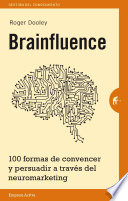

One of the primary concepts in 'Brainfluence' is the idea that much of human decision-making occurs at a subconscious level. The book delves into how consumers are often unaware of the factors influencing their choices, which can range from colors and sounds to scents and textures. Neuromarketing leverages these subconscious triggers to shape consumer behavior. For instance, research shows that colors can evoke specific emotions; red can create urgency, while blue can induce calmness. Marketers can use this knowledge to design products, advertisements, and environments that align with the desired consumer response. The book emphasizes that understanding these subconscious cues can lead to more effective marketing strategies, as they tap into the emotional and instinctual aspects of decision-making.
Continue readingAnother key idea presented in 'Brainfluence' is the significant role emotions play in consumer decisions. The author explains that consumers often rely on emotions rather than logic when making purchasing decisions. This means that marketers should focus on creating emotional connections between their brand and their audience. The book provides examples of successful campaigns that have evoked strong emotional responses, leading to increased sales and brand loyalty. By understanding the emotional triggers that resonate with their target audience, marketers can craft messages that not only inform but also inspire and engage consumers on a deeper level.
Continue readingTrust is a crucial element in consumer behavior, as highlighted in 'Brainfluence.' The book discusses how consumers are more likely to purchase from brands they perceive as trustworthy and credible. Factors that contribute to trust include transparency, consistency, and positive reviews. The author emphasizes the need for brands to build and maintain trust through their marketing efforts. This can be achieved by showcasing testimonials, providing guarantees, and being transparent about product ingredients or sourcing. Establishing credibility can lead to higher conversion rates and foster long-term customer relationships.
Continue readingSocial proof is another significant concept explored in 'Brainfluence.' The book explains that consumers often look to others for guidance when making decisions, especially in uncertain situations. This phenomenon can be leveraged in marketing by showcasing user-generated content, customer reviews, and endorsements from influencers. By demonstrating that others have had positive experiences with a product or service, brands can encourage potential customers to follow suit. The book provides various strategies for incorporating social proof into marketing campaigns, which can enhance perceived value and drive sales.
Continue readingScarcity and urgency are powerful motivators in consumer behavior, as discussed in 'Brainfluence.' The book explains how limited availability or time-sensitive offers can create a sense of urgency that prompts consumers to act quickly. This principle is often seen in marketing strategies that highlight limited-time discounts or exclusive products. The author provides insights into how to effectively communicate scarcity without appearing disingenuous. By creating a genuine sense of urgency, brands can increase conversions and encourage consumers to make quicker purchasing decisions.
Continue readingBrand storytelling is a vital aspect of marketing that 'Brainfluence' emphasizes as a way to connect with consumers on an emotional level. The book discusses how compelling narratives can engage audiences and make brands more relatable. By sharing stories that reflect the brand's values, mission, and customer experiences, marketers can create a deeper connection with their audience. The author provides examples of brands that have successfully utilized storytelling to enhance their marketing efforts, demonstrating how a well-crafted story can resonate with consumers and foster loyalty.
Continue readingFinally, 'Brainfluence' explores the neuroscience behind pricing strategies and how they affect consumer perception. The book highlights that consumers often perceive prices differently based on presentation and context. For instance, the use of charm pricing (e.g., $9.99 instead of $10) can create a psychological impact that makes the price seem more attractive. The author discusses various pricing strategies and their psychological implications, encouraging marketers to consider how they present prices to maximize perceived value and drive sales.
Continue reading